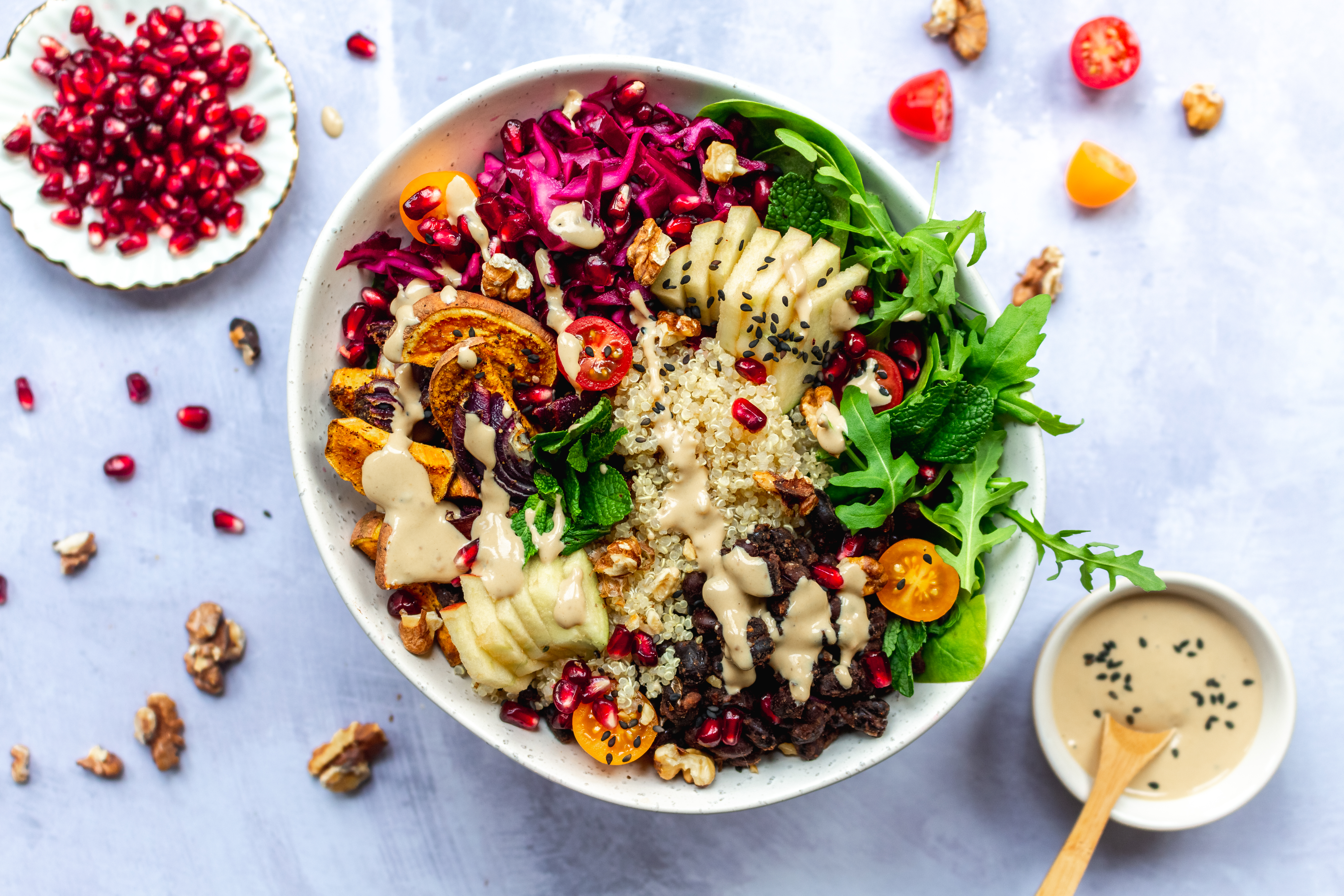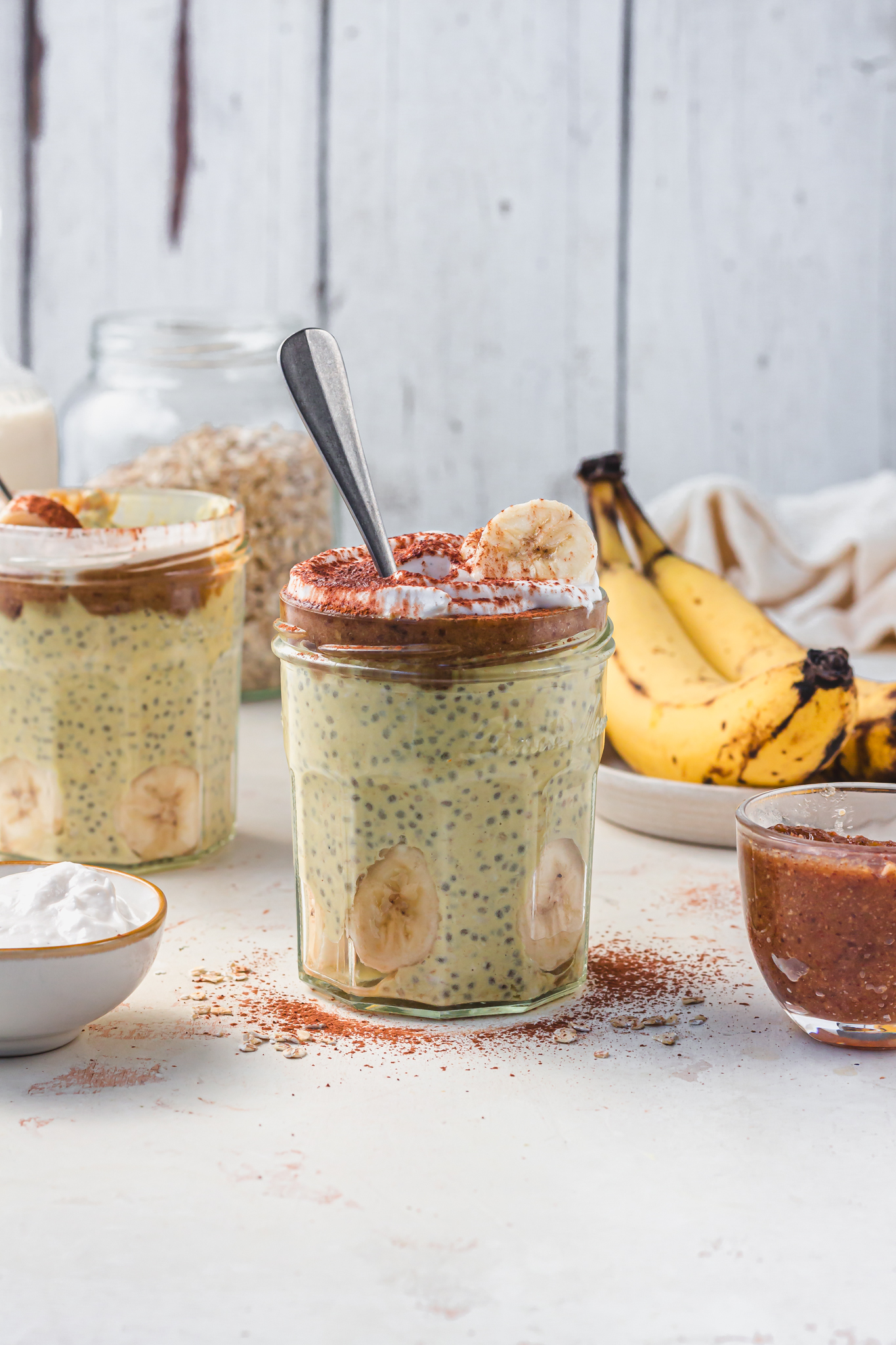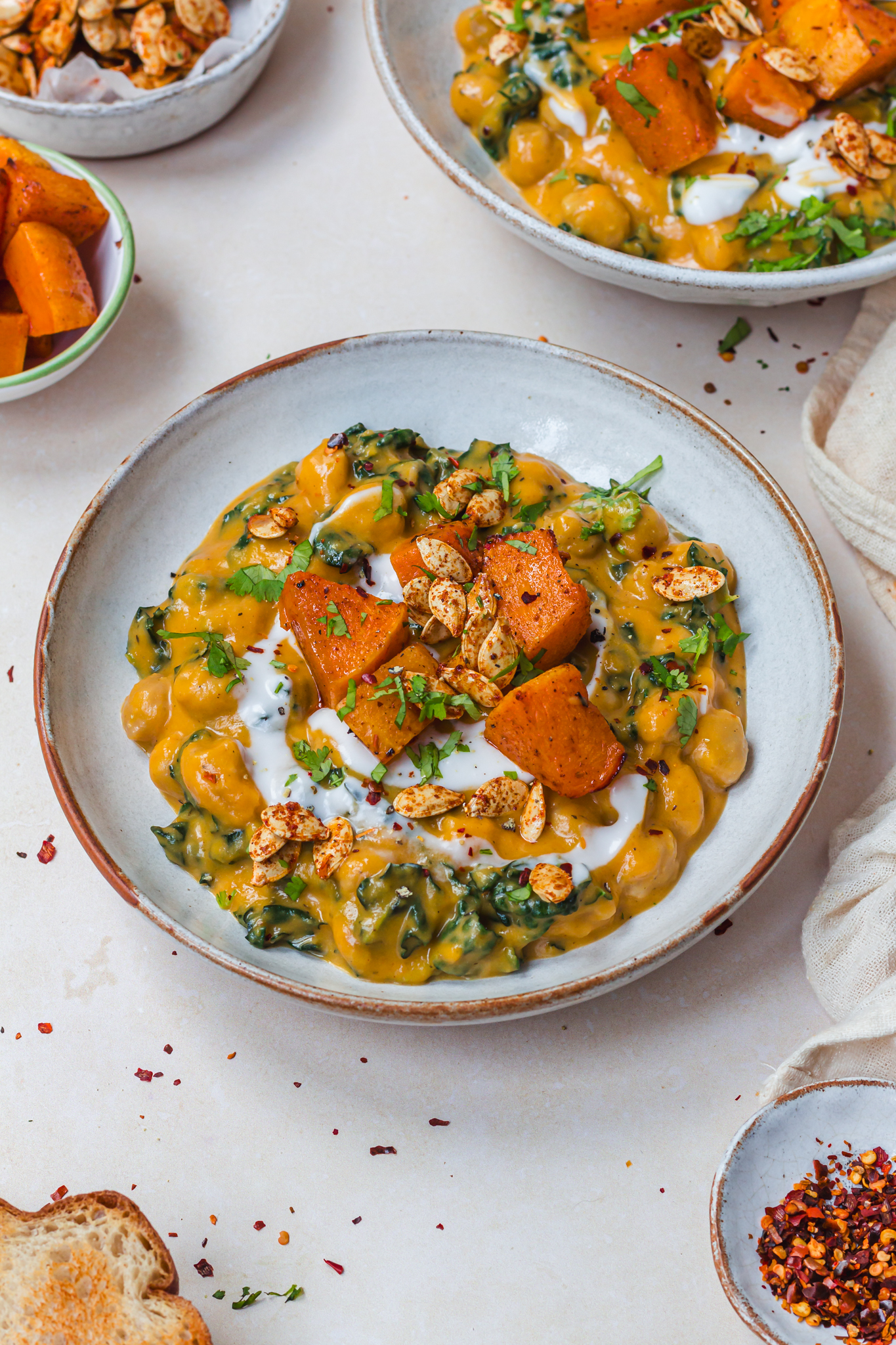Gut Health and Winter Glow Bowls with Lemon Tahini
Gut health is the buzz word. With terms like probiotics, prebiotics, and microbiome being thrown around every day in the media, I thought it was about time to delve deeper into my own gut health and provide a bit of clarity.
Gut health is fascinating, I could read about it all day long. I’ve read so many books, articles and social media posts from informed nutritionists that I like to think I know a fair bit. But I still get confused between a probiotic and a prebiotic and should we all be taking supplements? The industry probably says we should, but with a little research, education and understanding it can be simple to add in some foods here and there to really give your own gut health a boost.
What are probiotics?
These are microorganisms found in cultured foods that have been shown to improve health indicators. Probiotic and beneficial bacteria are markers for health and wellbeing because they perform many important functions that maintain gut health and balance in the microbiome. By doing so, they help keep your whole body healthy.
Probiotic foods are great to add to meals and snacks and can be found in products like yoghurts, kefir, sauerkraut, tempeh, kimchi and miso as well as kombucha drinks and pickles. They’re also really tasty!

Winter Glow Bowls with Lemon Tahini
What does the term “microbiome” mean?
Scientists consider the gut microbiota or microbiome to be a new organ in our body. It is a vast ecosystem of organisms such as bacteria, fungi, viruses and protozoans which live in your colon. Bacteria are by far the most numerous members of the human microbiome.
Diversity indicates the approximate number of bacterial species that live in a person’s gut. Each type has its own functions that are often complementary. A diverse microbiome can perform a broader range of tasks that regulate and compensate, making the whole system more stable… When there is a wide range of bacteria, other species take over these missing functions, but if the community lacks richness, this compensation mechanism may be compromised and cause dysbiosis, a condition known to precede illness.

Winter Glow Bowls with Lemon Tahini
Putting it all together
With better insight into what each component means, I set out to discover all about my own gut health with the Atlas Microbiome Test kit. I simply sent off the test and waited for my in-depth feedback via my online portal. And it was such a fascinating read!
To say I was proud of myself for having a scoring of 9 out of 10 for microbiome diversity is an understatement! The higher the diversity, the better, as mentioned above, so I was certainly pleased that my diet and lifestyle are benefitting me.
Other factors that came out positively in my results are:
- My probiotic and beneficial bacteria level (9 out of 10)
- High levels of B6
- Veggie Muncher Microbiome type: a diet rich in plant fibre with hardly any simple sugars, meat or fat.
While the above were all above average, some of my results were in the normal range. For example, B1, B2, B5, B7 and B9 which means my body is able to synthesise enough of each vitamin.
Fibre was also another area in which I was only “average”, so I am going to be more mindful of including more sources of dietary fibre into my diet.
Dietary fibres have prebiotic properties: they are a source of nourishment for beneficial gut microbes. These bacteria turn them into important nutrients, like butyrate and vitamins. Eating a variety of fibres encourages the growth of beneficial bacteria who also play a role in protecting from disease and opportunistic microbes that can make you sick.
There are a few simple ways to increase the amount of fibre in your diet. For example, switching from white bread and pasta to whole-grain varieties, including wholegrain cereals, eating more nuts, seeds and fruits as snacks, adding peas, beans and vegetables to your meals and cooking potatoes with their skin on.

Winter Glow Bowls with Lemon Tahini
There were a few areas which under-performed, mainly my Vitamin B3:
Vitamin B3 (niacin) is involved in the metabolism of fats, protein and amino acids. It lowers the level of “bad” cholesterol, dilates small blood vessels (including in the brain), improves microcirculation, maintains skin health and supports the work of the gut lining…
There are so many sources of Vitamin B3 from almonds to sweet potatoes, bell peppers to brown rice and miso to quinoa.
With all of these results in mind, I started to think of a delicious, vibrant and plant-based recipe to offer great microbiome diversity and to improve on those lower-performing areas. The kit was also quite easy as the Atlas dashboard recommends certain foods that would help me specifically based on my results. So here it is:
Winter Glow Bowls with Lemon Tahini
Each ingredient in these bowls has been specifically selected for their levels of dietary fibre and vitamin B3 as well as being generally delicious. The focus is on vibrant, colourful and wholefoods in this meal, and it tastes delicious. A buddha bowl of cumin roasted sweet potatoes and red onions, garlicky black beans, quick pickled cabbage, cooked quinoa, green spinach leaves, crunchy walnuts, sweet apple and pomegranate and creamy lemon and miso tahini dressing.
Winter Glow Bowls with Lemon Tahini

A buddha bowl of cumin roasted sweet potatoes and red onions, garlicky black beans, quick pickled cabbage, cooked quinoa, green spinach leaves, crunchy walnuts, sweet apple and pomegranate and a creamy lemon and miso tahini dressing.
Ingredients
- Bowls:
- 100g quinoa
- 1 medium sweet potato
- 1 red onion
- ½ tsp cumin
- 100g red cabbage, shredded
- 1 tbsp apple cider vinegar
- 1 tbsp lemon juice
- 200g black beans, drained
- 1 garlic clove, crushed
- ½ tsp smoked paprika
- ½ tsp cumin
- 1 tbsp apple cider vinegar
- To serve:
- 1 apple, thinly sliced
- 40g walnuts
- Fresh herbs, chopped
- Pomegranate
- Lemon Tahini:
- 3 tbsp tahini
- 1 tsp miso paste
- 1 tbsp lemon juice
- Salt and black pepper
Directions
1. Preheat the oven to 160Fan/180*C and line a baking tray with parchment paper. Chop the sweet potato and red onion into small chunks and toss with some olive oil, ½ tsp cumin and some salt and black pepper. Roast for 30 minutes or until tender. Add the walnuts to the edge of the tray for the final 10 minutes.
2. Meanwhile, cook the quinoa according to packet instructions, drain and leave to one side and fluff with a fork before serving.
3. Add the shredded cabbage to a bowl with 1 tbsp apple cider vinegar, 1 tbsp lemon juice and a pinch of salt. Massage with your hands for a couple of minutes. Leave to one side.
4. Heat a small frying pan with some olive, add in the black beans, garlic, ½ tsp smoked paprika, ½ tsp cumin and 1 tbsp apple cider vinegar and cook for a couple of minutes. Season to taste.
5. Prepare the lemon tahini dressing by stirring together all the ingredients until smooth, adding 3-4 tbsp water to reach a pourable consistency. Season with salt and black pepper.
6. Divide the spinach between two bowls, top with the quinoa, roasted vegetables, red cabbage, garlicky beans, sliced apple, walnuts, some fresh herbs, pomegranate and the lemon tahini.

Winter Glow Bowls with Lemon Tahini
I hope you will love these Winter Glow Bowls with Lemon Tahini and information on gut health. Let me know below what you think and share your facts and creations with me on social media – I’m @nourishing.amy on Instagram and use the hashtag #nourishingamy. I’m also on Twitter, Facebook and Pinterest – please say hello!
With gut-healthy love x
This post and accompanying social media post are sponsored by Atlas who provided me with the test kit and information. All opinions are my own!
All nutritional information is taken from Atlas and can be found to be credible and fully researched.




That looks glorious and does you good – perfect!
Oh thank you, yes it ticks all the boxes!
Such a informative read Amy and I have never heard of Mirciobiome And Prebiotic before. I heard about them on Hugh fernely Whittingstall new programme Live Well and its on bbc 1. Your recipe above looks so refreshing and as vibrant as a rainbow 🌈 hope you enjoyed. Splendid photography and I love 💖 reading your posts, I so wish I could start my own food lifestyle insta page and blog like you. You are so inspirational. Definitely will tag you into my creations xxxx
So glad you found it interesting! Enjoy it! x
Your gut health treat kit sounds super and so interesting never heard of them before xxxx
Yes so fascinating!
I can’t have to much fibre since of IB but I enjoy veggies, fruit and potato much more xxx
Sounds like a good balance for you!x
Saved to my Instagram collection xx
[…] If you are looking for healthier and filling dinner options, how about my Paprika Roasted Squash and Apple Salad with Ginger Tahini, Roasted Red Pepper and Cauliflower Harissa Traybake, Tempeh Marinara with Rice or Winter Glow Bowls with Lemon Tahini. […]